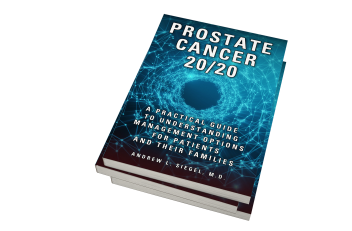Andrew Siegel MD 5/23/2020
There are many types of “bumps down below.” This term may refer the graceful and curvaceous lower abdominal swelling of the pregnant female, e.g., that of one of our nurse practitioners who is due tomorrow. Another form of “bumps down below” is a birds-eye view of a majestic mountain range as seen in the photo below.

Colorado Rockies viewed from airplane, Thank you Merrilyn Griffin
Alternatively, “bumps down below” may indicate unwanted germinations occurring on the genital regions, one of which is sebaceous cysts of the scrotum and labia, the topic of today’s entry.
This subject is certainly not high up on the priority list of compelling health and wellness issues, but nonetheless, enough patients complain of and seek consultation for these minor swellings that I thought a short entry would be useful.
Why should something afflict the female labia and the male scrotum, seemingly disparate and distinct structures? Simply because the labia majora (outer vaginal lips) and scrotal sac are “homologous” structures, meaning they have a common embryology, both originating from the “labioscrotal swelling.”
Sebaceous cysts commonly occur on the scrotum and the labia majora because of the abundant presence of hair follicles on these structures. They also can occur anywhere on the body where hair follicles are present, particularly the face, neck and trunk. The bottom line is that when ducts of sebaceous glands become blocked, variable-sized lumps or cystic masses may result.

Image of multiple scrotal sebaceous cysts, from “Modern Surgery, General and Operative,” Da Costa, J, Chalmers, Saunders (1919). This is a particularly severe case.
Glands are organs that secrete chemical substances that have specific purposes. Exocrine glands are those that secrete a substance via a duct to an epithelial surface. Epithelial surfaces refer to the thin tissue that forms the outer layer of the body’s surface and also the thin tissue that lines hollow organs such as the bladder and intestine.
Sebaceous glands are small exocrine oil-producing glands that are typically attached to hair follicles and release an oil known as sebum into a duct that channels to the skin surface. This oil functions to nourish, moisturize and protect the hair and adjacent skin. In addition to the oil component, sebum also contains keratin (a structural protein) and cellular debris. The production of sebum is governed by the release of hormones, particularly testosterone.

Sebaceous glands inserting into hair follicles, thank you Wikipedia Commons, public domain
Sebaceous glands normally appear as numerous small yellowish bumps on the scrotum, penile base, and labia majora. In some people, they are prominent and are referred to as sebaceous gland hyperplasia. At times, they can exist without a hair follicle even being present. Regardless, they are a normal occurrence.
Sebaceous cysts develop when the duct of a sebaceous gland becomes blocked, similar to the way acne develops. With the continued production of the sebum and no avenue for exit, cysts can grow to variable sizes and are filled with sebum, similar to a cannoli filled with cream. They can be solitary or numerous and are generally painless and rarely serious. They have a characteristic yellow-white cheesy color and smooth consistency.
Most sebaceous cysts do not require treatment unless they become infected, a source of discomfort or a cosmetic issue. When treatment is necessary, the procedure of choice is complete surgical excision of the cyst(s) including the cyst wall. The skin above the cyst is carefully incised without rupturing the delicate cyst wall. The “sac” consisting of sebaceous cyst and surrounding wall must be dissected entirely and removed. If even a small portion of the cyst wall remains, the cyst will often reform, so any remaining wall needs to be excised completely or alternatively, cauterized using heat.
Wishing you the best of health and a wonderful Memorial Day weekend,
![]()

Yours truly with my trusted MacBook that I bring everywhere to occupy inevitable downtime and delays.
A new blog is posted weekly. To receive a free subscription with delivery to your email inbox visit the following link and click on “email subscription”: www.HealthDoc13.WordPress.com
Dr. Andrew Siegel is a physician and urological surgeon who is board-certified in urology as well as in female pelvic medicine and reconstructive surgery. He is an Assistant Clinical Professor of Surgery at the Rutgers-New Jersey Medical School and is a Castle Connolly Top Doctor New York Metro Area, Inside Jersey Top Doctor and Inside Jersey Top Doctor for Women’s Health. His mission is to “bridge the gap” between the public and the medical community. He is a urologist at New Jersey Urology, the largest urology practice in the United States. His latest book is Prostate Cancer 20/20: A Practical Guide to Understanding Management Options for Patients and Their Families.

Video trailer for Prostate Cancer 20/20
Preview of Prostate Cancer 20/20
Andrew Siegel MD Amazon author page
Prostate Cancer 20/20 on Apple iBooks
PROSTATE CANCER 20/20: A Practical Guide to Understanding Management Options for Patients and Their Families is now on sale at Audible, iTunes and Amazon as an audiobook read by the author (just over 6 hours).
Dr. Siegel’s other books:
PROMISCUOUS EATING— Understanding and Ending Our Self-Destructive Relationship with Food
MALE PELVIC FITNESS: Optimizing Sexual and Urinary Health
THE KEGEL FIX: Recharging Female Pelvic, Sexual, and Urinary Health